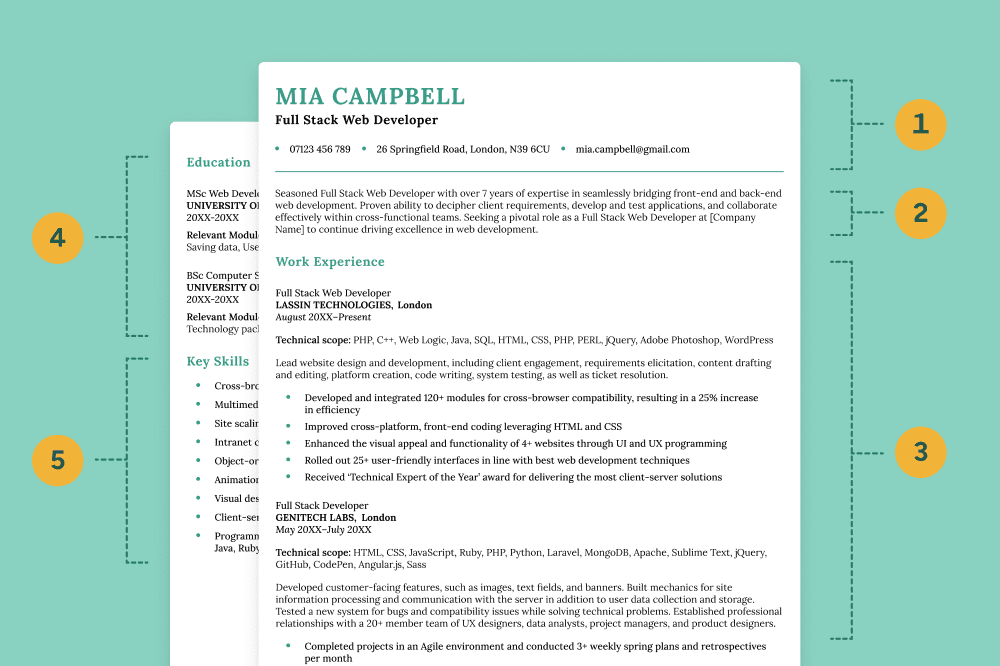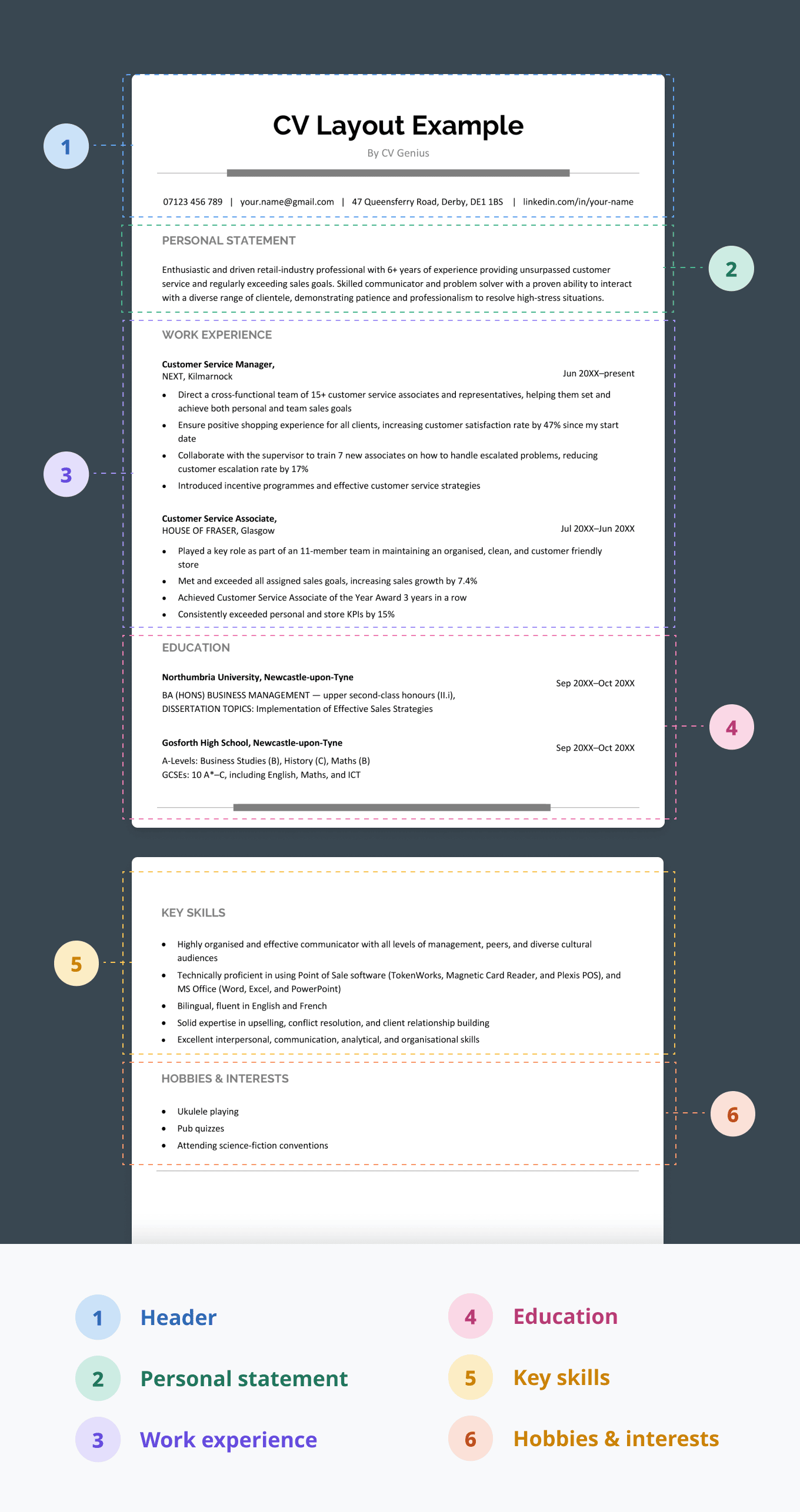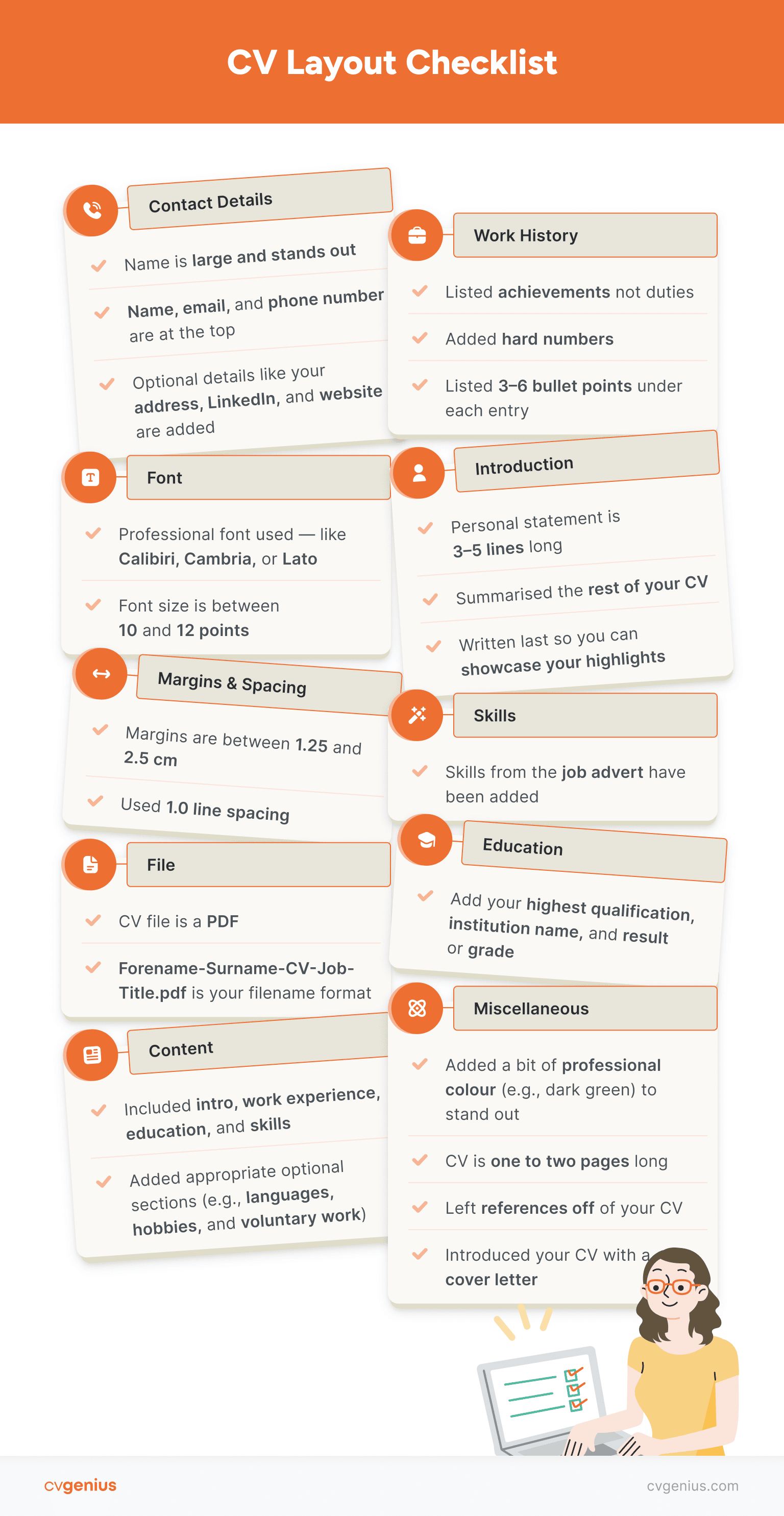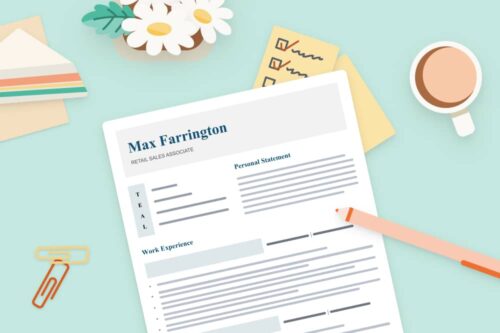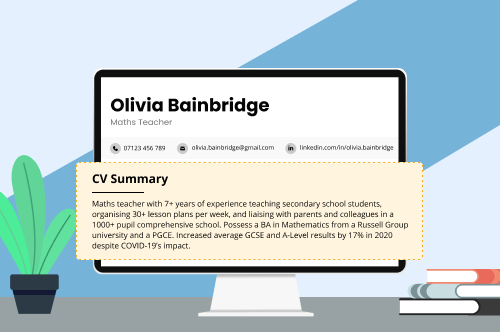If you want to write a CV that impresses employers and wins job interviews, using a professional CV layout is essential. This video guides you through CV presentation if you’re uncertain:
If you’d prefer to read, let’s get started. The best CV layout should include these six CV sections:
Download This CV Layout Example
This layout uses the chronological CV format, meaning it lists your work experience in reverse, starting with your most recent job.
The chronological CV layout is the most common CV layout. However, depending on your specific situation, other layouts may be more appropriate. For example, a skills-based CV layout may be more helpful if you’re starting a new career.
Employers in certain industries expect applicants to lay out their CVs differently from standard job applications. Check job-specific CV examples to see what standards are in place in your industry.
3 CV layouts for specific situations
These alternative CV layouts are useful if you need a different format for your CV. Use the layout that suits your situation or download an example of each one to see how it should look in Microsoft Word.
1. Skills-based CV format for no-experience job applicants
If you’re writing a CV with no experience or switching careers, a skills-based CV layout can help you make up for your lack of work experience.
Skills-based CVs emphasise what you know and what you can do by making your skills section the largest and most detailed part of your CV:
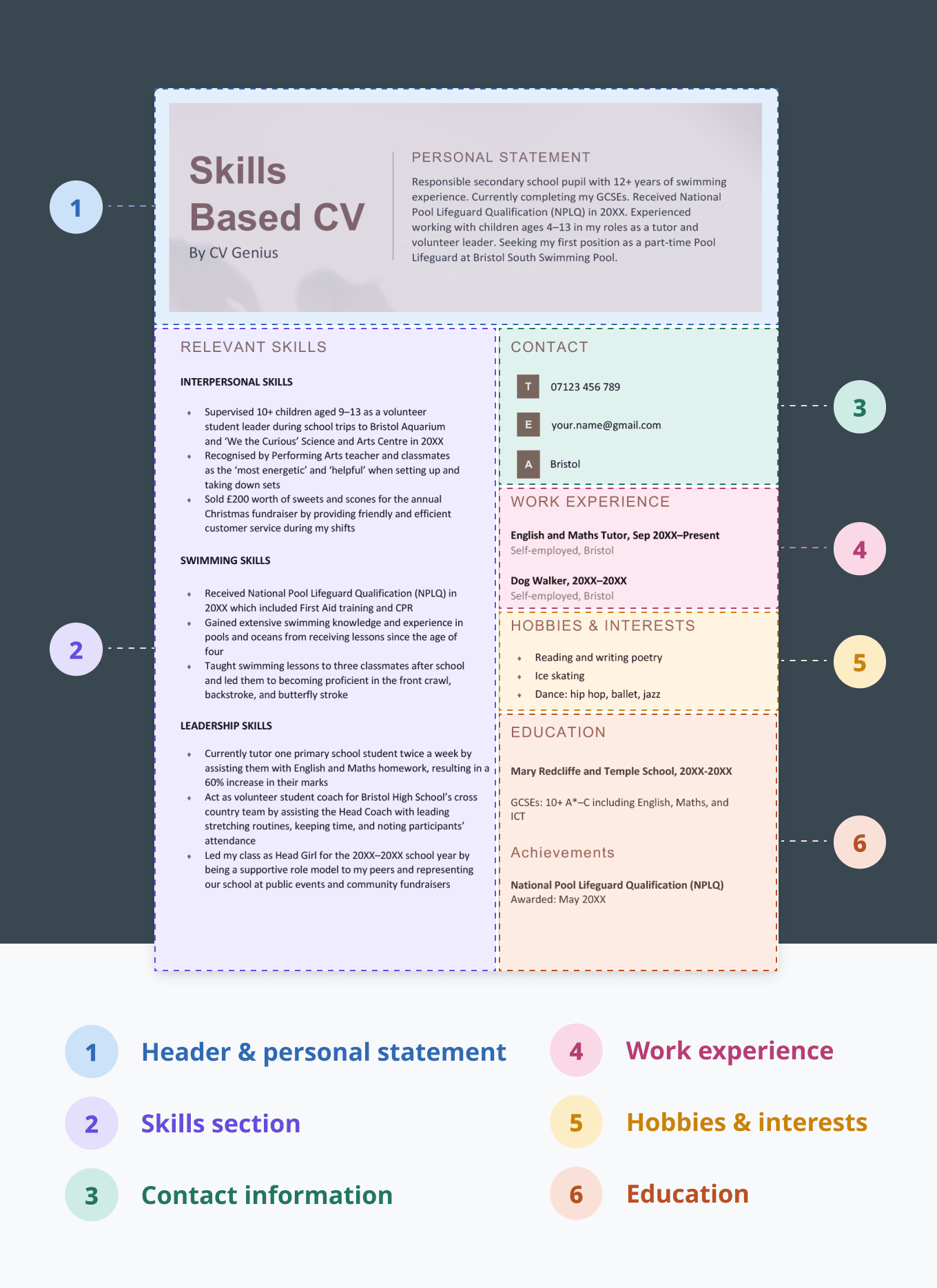
Use This CV Layout
Who should use a skills-based CV layout?
2. One-page CV layout
If you’re early in your career or writing your first CV, you might find writing a two-page CV difficult.
So instead, format your experience and skills using a one-page CV layout like the one below:
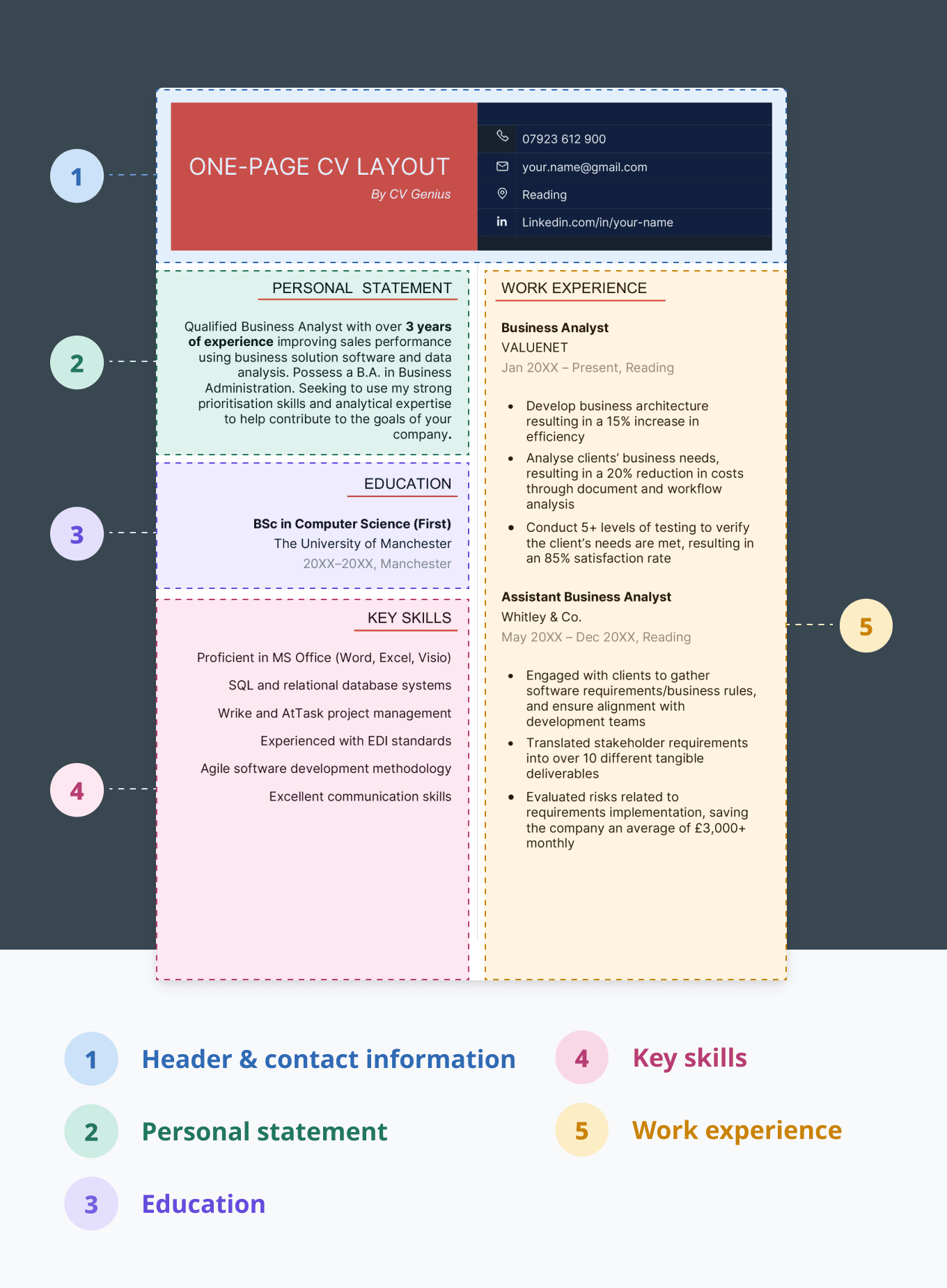
Use This CV Layout
Who should use a one-page CV layout?
3. Standard chronological CV layout
Here’s a second look at a chronological CV layout, the standard format for a UK CV:
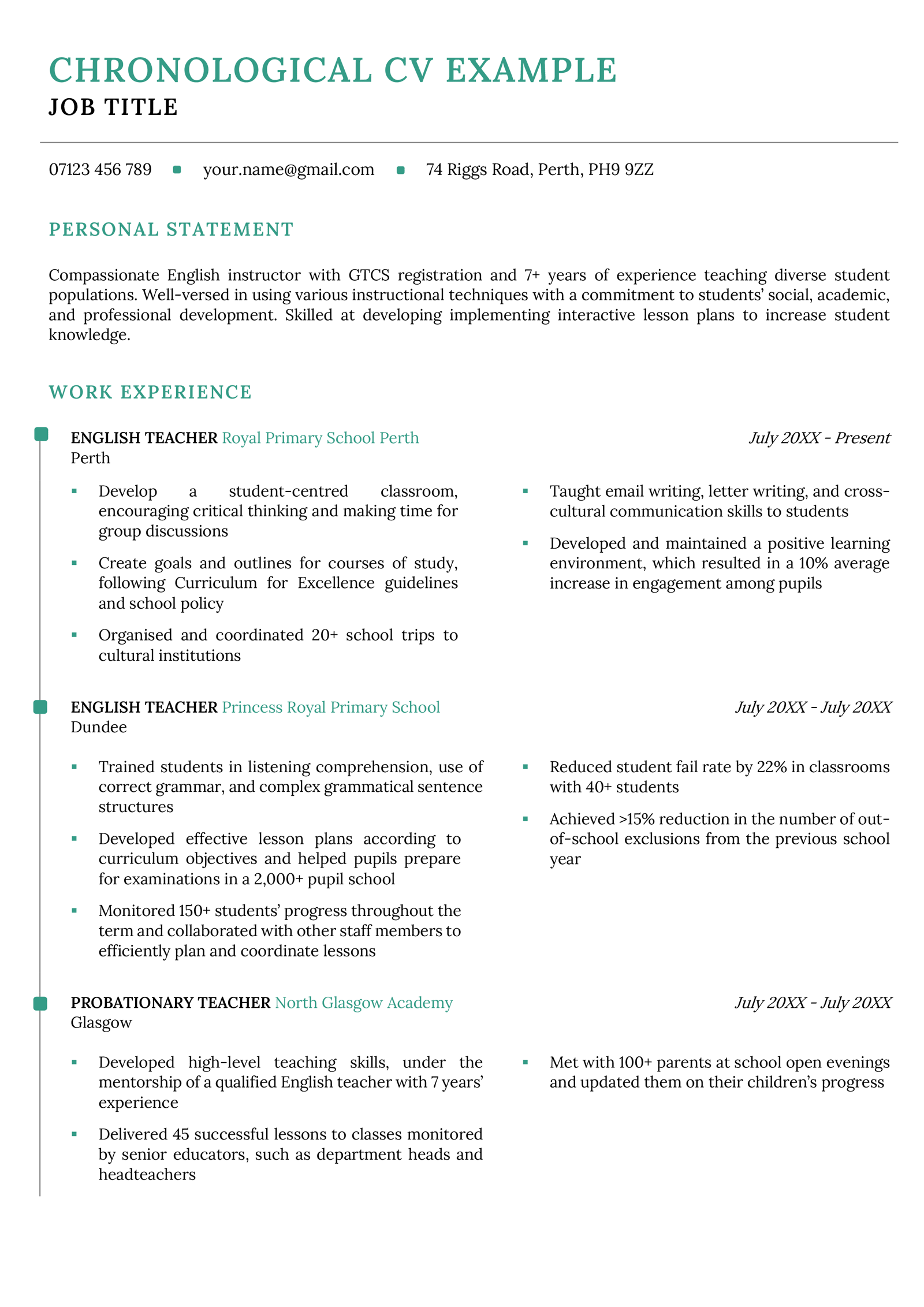
Use This CV Layout
Who should use a chronological CV layout?
CV layout checklist
Once you’ve finished laying out your CV, use this checklist to make sure you remembered everything:
5 essential CV formatting tips
Here are 5 tips to help you ensure that your CV formatting is clean, professional, and easy for the employer to follow:
1. Make sure you have the right amount of white space: 2.5–1.25 cm margins are normal for the UK, with 1–1.15 line spacing.
2. Use an appropriate font and text size: 10–12 points is fine for your CV body text. Bigger CV font sizes (e.g., 16 points for section headers and 30 points for your name) are also appropriate to help CV parts stand out.
3. Make easy-to-skim section headers: make section headers stand out with bold, italics, and underlined text.
4. Ensure your CV’s length reflects your experience: a standard CV is two pages, but a 1-page CV is okay if you’re new to the job market. Three pages or longer is fine for senior candidates or academic applicants.
5. Save your CV as a PDF: sending your CV in PDF format ensures it retains its formatting no matter what computer the employer uses.
Worried you might forget one or two of these formatting rules? Use an online CV maker and have your application formatted automatically.
Frequently asked questions about CV layouts
Below are the answers to common questions about laying out and formatting your CV:
1. How should I structure a CV?
You can structure a professional CV that impresses employers by dividing your document into the following sections:
- Header — with your full name and relevant personal details, such as your email and phone number
- Personal statement — summarising your key qualifications in 2–4 sentences
- Work experience section — listing your relevant employment history, including the employer name, employment dates, job location, and 3–5 responsibilities or achievements
- Education section — specifying any degrees, school qualifications, or formal training you’ve received
- Skills section — highlighting any hard or soft skills that are important to the role
- Hobbies and interests — telling the employer about your favourite hobbies and interests outside of work
2. How far back should a CV go?
Generally speaking, you only need to include the last 15 years of your work experience.
It’s perfectly acceptable to include jobs you did earlier in your career if they’re very relevant to the job you’re going for. Otherwise, leave them off because they hint at your age, potentially leading to age discrimination against you.
If you do include these experiences, you don’t need to include as much detail because they happened a long time ago.
For work experience entries over 15 years old, all you need to include is:
- your job title
- dates of employment
- employer
- location
Here’s an example of what an old work experience entry should look like:

3. What’s the best format for a CV?
The best CV format for most job applications is the chronological CV format (also known as the reverse chronological format).
The chronological format organises your work experience in reverse, starting with the most recent job you did.
Most employers will be familiar with this good CV layout, making it appropriate for any industry if you have some previous work experience.
If you haven’t got any work experience at all, or are applying for a job in a new field, a skills-based format might be a better choice for you.
4. Where can I download a chronological CV template?
You can download a chronological template from a free CV templates library.
The chronological CV format is the most common CV format that job applicants use, but it’s also one of the easiest to adjust for different jobs, industries, and company cultures. Therefore, the best CV template libraries for jobs offer various designs that follow the chronological CV format, the standard CV layout.
If you plan on sending a cover letter with your CV (and you should), write it on a downloadable cover letter template that matches your CV template design. This approach will make your application look cohesive and emphasise your attention to detail.
5. Should I put references on my CV?
Generally, you shouldn’t put references on your CV. You also don’t need to include the phrase ‘References available on request.’
When you send in your CV, employers are mainly interested in your skills and previous work experience.
And because the proper CV length is only 1–2 pages, you don’t have a lot of space. So focus on emphasising the traits that make you a good fit for the role. If the employer is interested in your application, they’ll ask you to provide references later.
